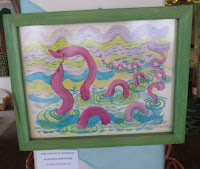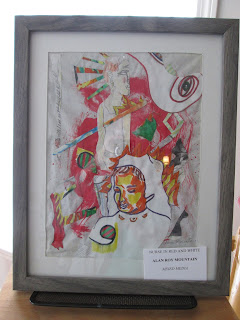I feel challenged by a
recent FB conversation thread to defend my "idealism," my conscience,
and my steadfast refusal, against repeated urgings and sometimes outright
bullying, to make any commitment about how I will vote in November if Hillary
Clinton is the Democratic nominee. All such urgings, as in this particular
conversation, argue that a write-in vote for Bernie or a vote for a 3rd party
candidate such as Jill Stein is a vote for Donald Trump. They tell me that
personal idealism and conscience make every such voter "responsible"
for electing the worst possible president, and that "realism" is the
more mature and responsible approach.
First, the issue of responsibility
for election results. Voters who vote their conscience instead of for Hillary
Clinton are responsible for electing Donald Trump? Really? Does the Hillary
Clinton campaign bear any responsibility for being so out of step with so many
Democrats on so many of the issues. Do the authors of a rigged electoral system
bear any responsibility? Does the media who fill their newscasts with attention
to Donald Trump every day bear any responsibility? Do the voters who voted for the sake of
realism against their conscience and ideals for Hillary Clinton in the
primaries bear any responsibility? The issue of who or what is responsible for
the election of Donald Trump is far more complicated than suggested by those
who blame idealism or conscience voters
Putting aside for the moment
all the possible and slippery meanings, philosophically, of “idealism’ and “realism,”
let’s assume that the meanings are what they appear to be on the surface of
this particular argument. Hillary and her supporters argue that Bernie and his
supporters are unrealistic, that his policy proposals are too idealistic to be
workable, and that he doesn’t have the appropriate experience to make them work.
Are these arguments
really valid? Every one of Sanders' policy proposals on issues I care most about are
realistically and successfully practiced somewhere in the world today, or we
already have the know-how and resources to put them into practice. Income equality,
environmental protection, health care, social justice, education, financial and
corporate regulation, political and electoral reform, promoting
a more sensible foreign policy, etc., all
of these issues I am idealistic about, and I believe they are also realistic.
Bernie’s record in the House
and then in the Senate for getting things done is less well-known than Hillary’s
experience as Secretary of State but it is far more impressive in terms of
accomplishing his priorities than Hillary’s congressional experience is. Known
as the “Amendment King,” he has demonstrated his ability to work with others in
congress to make improvements in corporate crime accountability, protecting
pensions, expanding free health care, protecting against nuclear disaster, environmental
protection, protecting veterans benefits, protecting U. S. workers, revealing
corruption in the Military Industrial Complex, and much more. All of these are issues I am idealistic about, and he made progress on them a
reality.
Hillary's representation, on the other hand, of Wall Street while she was in congress is anathema to my ideals, as they resulted in a contribution to the problems of income inequality, poverty, and the disappearance of the middle class. This is realism.
As Secretary of State, Hillary
Clinton clearly has more foreign policy experience in terms of quantity than Bernie Sanders,
but I question the quality and values of that experience. Her record shows she
is clearly more prone to reach for the use of force to resolve conflict than
Sanders, and much more hawkish than I want in a president. Not only her vote on
the Iraq war which she has admitted was a mistake, but also she pushed hard for
a troop surge in Afghanistan. She
strongly advocated for military action against Qaddafi's regime in Libya, She
wanted to arm the rebels against Assad's regime, and she argues for a no-fly
zone in Syria. I am idealistic about peace. All the time I see people around me
coping with conflict in their lives without resorting to physical force or violence.
In everyday “real” life such coping is more the rule than the exception. And it
is much more the general expectation in everyday “real” life than in
international affairs. I believe it is possible to translate that expectation to
foreign policy by putting more emphasis on diplomacy and negotiations as John
Kerry has done with the recent Iran deal to prevent the expansion of nuclear
weapons. He bridged a gap there between idealism and realism.
There does not have to
be an unbridgeable gap between our ideals that so many of us agree on and the
demands of real life. I do not intend to enable with my vote or otherwise those
who believe there must be that gap in the name of realism, and I definitely do
not intend to enable the 1% who stand to gain so much from keeping the gap
unbridgeable. I believe it is my responsibility to do my best to help build bridges,
and I will vote my conscience and ideals in November. Until then I won’t say who
I will vote for, except that it won’t be for Donald Trump.














